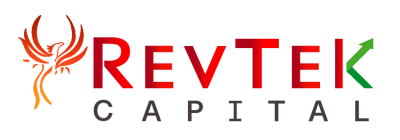Software as a Service is a very diverse world that does not have a one-plan-fits-all when offering products, measuring metrics, sales, and marketing, or really any aspect of the SaaS business model.
But one thing can be said about all SaaS Businesses across the board: User Pricing Matters.
The cost you charge for using your subscription-based software is the number one metric that affects your revenue.
Many start-up businesses spend a great deal of time and energy determining the pricing of packages upfront, but do not make adjustments as the business grows. Yet, the most successful SaaS companies are constantly collecting data, tweaking price points, and adjusting package offerings in order to ensure they are providing the best value and receiving the most revenue per customer possible.
Whether you are a young or established B2C or B2B SaaS Company, it is a great idea to assess your SaaS Cost Structure plans. Outlined below are some popular pricing models, strategies, and tactics that many software companies use for boosting total revenue growth.
SaaS Pricing Models
Many pricing models are available in the SaaS world, and the possibilities are almost endless. The pricing model you choose to employ may depend on the type of business you run: small or large. It also depends on the type of business you cater to: start-ups or enterprises. In any case, here are a few popular options to choose from:
Flat Rate Pricing
Flat rate pricing is undoubtedly the least complicated. This type of pricing entails offering one SaaS product or set of features for one price. It is the easiest model to advertise because all marketing dollars are spent on one plan that is easy to communicate.
However, the drawbacks are that there is no way to tailor plans according to an individual business’s needs, and there is no way to up-sell a current client. Flat rate pricing may be an easy way to roll out a new business, but should quickly be re-assessed and joined by differing plans in order to grow your business.
Tiered Pricing
Tiered pricing is the most commonly used model in the SaaS business world. It entails focusing on feature pricing, where multiple plans are offered at different rates depending on the provided features. This model is beneficial to most companies because it allows for flexibility to take on clients of different sizes and sign up according to their own needs. It also gives a clear path towards upselling for current clients who may need access to more features. The flexibility of a tiered pricing plan also gives you the option to tweak and roll out new features that each plan may include.
A drawback is that it has the potential to be confusing. Offering users too many choices may lead to choice paralysis and cause potential clients to become overwhelmed. Therefore, it is commonly found that businesses that provide an average of 3.5 tiered pricing plans have the highest conversion rate of new customers.
Per Pricing
These models are the most complicated yet provide great flexibility and value for you and the customer. Per pricing refers to different pricing scenarios based per action, such as per user, per usage, per features, etc. These options allow customers to save money by only paying for the features they actually use or how many active users they employ. Which allows you to provide only service or labor for actions that are actually used as well. There is an excellent opportunity for feature upgrades with this model, as users become long-term users of your product. Also, it can lower the risk for companies to adopt your product.
Drawbacks, though, are that it requires an extra element on your part to track what features or amount of users are using the product. It can also lead to more frustration from users that feel limited, which in turn leads to higher churn as they do not have much at stake in leaving your company. These pricing plans are perhaps a good option, depending on which Per Pricing Model you use. A small business with only a few users that need access to the most cost-saving option, or large enterprises that have the potential for many users or high user turnover.
Pricing Strategies & Tactics
No matter the type of model you intend to employ, there are many other strategies and tactics available to achieve growth. These may be used in place of your standard pricing model for a time. Or in addition to your standard options.
Objective-Based Pricing
This option is often used when trying to reach a new growth level. The pricing is offered based on the objective trying to be achieved. For a new SaaS business, this may mean offering a plan at an unsustainable low price in order to corner the market, with the intention of quickly upselling for better, more profitable features.
For an established business rolling out new plans or features, this may mean offering a plan at a high price and advertising towards those who desire to be the first to have something new. Then, slowly lower the cost as the novelty wears off to attract new upsells or clients.
Number Focused Pricing
This tactic is all about the specific numbers offered for your pricing. Many scientific studies have assessed human psychology and processing speeds when looking at numbers. Such as in charm pricing, where a user is more likely to purchase a product for $399 than $400.
This tactic may also include the positioning of your plans where the “most popular” plan is highlighted and placed in the center, whether that is the medium-priced plan or not. Basing your pricing plans on scientific research is proven to produce better results and revenue for you.
Freemium or Trial Pricing
Many SaaS businesses employ freemium or trial plans in order to allow the customer to try the product before buying. This method is a tried and true way of upselling existing users. In this strategy, it is key to offer a great experience with a base plan worth purchasing once a user needs to access higher features or a trial period runs out. Most popular SaaS companies use some version of this strategy.
Where To Start?
When deciding how to set or redesign your SaaS Cost Structure, there is an essential balance to maintaining your own business’s needs with the client’s needs. It is important to offer pricing that builds revenue and covers your business costs. Still, it is most important to provide pricing that reflects the value of what you are offering.
At RevTek Capital, we desire to see your business thrive by offering pricing plans that work for your company and your clients. We have a knowledgeable team of professionals familiar with SaaS Cost Structures. We can advise you on strategies, develop growth plans, and help you secure capital to reach that next growth step in your SaaS Business.
Contact our team to begin the process of securing capital to assess your SaaS Cost Structure today!



